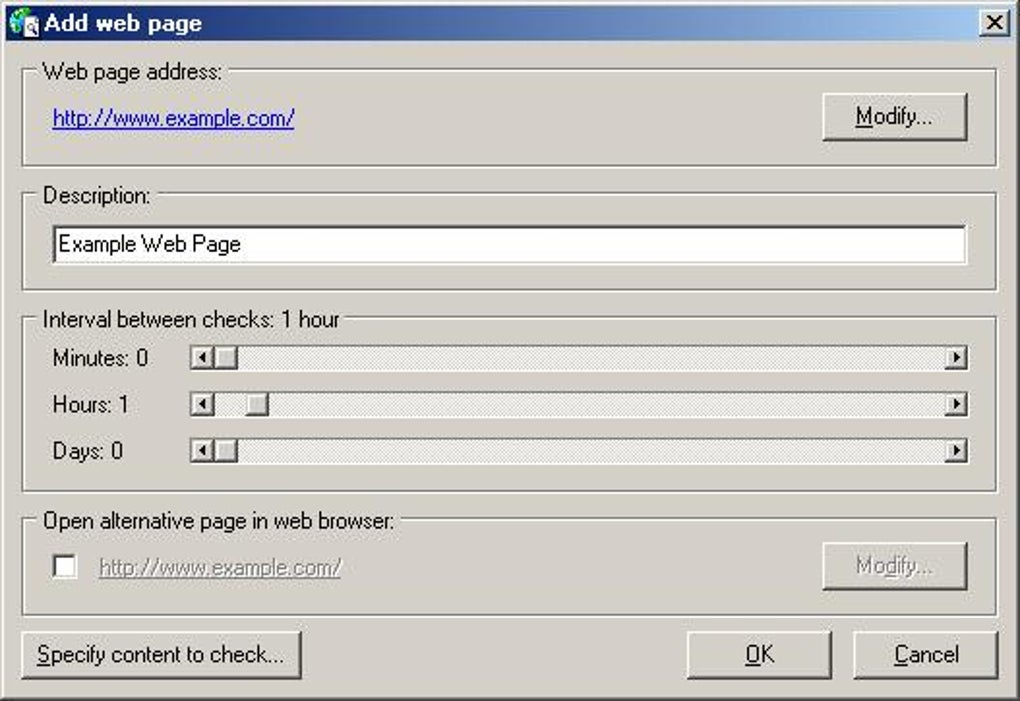WebMon is a handy, free Windows software, that belongs to the category Browsers with subcategory Browser tools. More about WebMon Since we added this software to our catalog in 2005, it has obtained 1,895 downloads, and last week it gained 4 downloads.WebMon is available for users with the operating system Windows 95 and former versions, and it.
You can send Webmon alerts to AlertOps.
- Find Webmon software downloads at CNET Download.com, the most comprehensive source for safe, trusted, and spyware-free downloads on the Web.
- The webmon.exe is an executable file on your computer's hard drive. This file contains machine code. If you start the software WebMon on your PC, the commands contained in webmon.exe will be executed on your PC. For this purpose, the file is loaded into the main memory (RAM) and runs there as a WebMon process (also called a task).


- AlertOps will open a new incident when an alert is received from Webmon with a status of down.
- AlertOps will close the same incident when an alert is received with a status of up.
- You can configure multiple mapping rules for Webmon.
- In AlertOps, you can craft a custom message to be sent out with the alert using any field from the inbound JSON.
- You can map any inbound field to a custom field in AlertOps.
- You can map any inbound field to the topic field in AlertOps, and use topics to track incidents and also to route incidents to teams.
These are examples of just some of the things you can do with Webmon and AlertOps.
AlertOps has many features to make your incident management life easier: multi-modal communication, teams with on-call schedules, customizable messages, routing rules, customizable workflows and escalations, SLA based severity management and much more.
At AlertOps we offer over 50 of the top third party integrations for monitoring, service desk, hosting and chat tools and we are adding more every day! If you’re new to AlertOps, sign up for a free trial to get started today!
WebMon is a tiny free tool which can monitor specified web pages and let you know when they're updated. Which means you'll be alerted just as soon as your favourite sites have something new to offer, without the hassle of having to keep revisiting them manually.
This all starts with a right-click on the program's system tray icon. Click 'Add Page', enter the URL of the page you'd like to monitor, and how often it should be checked (you're able to specify anything from minutes to days).
Click OK and the program will then run in the background (it only consumes around 6.5MB RAM, so shouldn't be too much of an issue), accessing the specified page at your chosen frequency and raising a pop-up alert if it sees the content has changed.
Need to monitor more pages? You can manually add as many as you like (although, of course, if you're checking 500 every minute then that's going to generate a lot of network activity). And the program can also directly import your Internet Explorer Favorites, or URLs from a Bookmarks.html file.

Some pages will raise alerts all the time, perhaps because they contain dynamic content (current headlines, say). WebMon does a reasonable job of catering for this by allowing you to specify an area of the page to check, though. It's not easy to set up - you must wade through page source code - but still a reasonable solution for a free tool of this size.
And if you don't like some other aspect of WebMon's operation, the good news is that the program is highly configurable. Not happy with the default pop-up alert, for instance? Then you can change its position, have it close more quickly, replace the pop-up with a sound, even just run another program of your choice whenever the content of a web page changes (which presents all kinds of automation possibilities).
Verdict:
Webmonkey
A compact, versatile and configurable web page monitor
